After a peaceful night at Piškera we slipped our lines and continued our journey south. It was a lovely clear morning with light winds so the sails were set to head towards Hvar. However, once away from the shelter of the islands the wind picked up and switched direction, it was blowing from directly in front of us which was not particularly comfortable and involved a lot of tacking.
Often with sailing, it is best to ‘go where the wind takes you’, so we changed our destination and had a great sail over to Milna on the island of Brač. There are several pretty bays just outside of the town so it was easy to find a good protected spot surrounded by trees to drop our anchor. It was really calm except for when the ferry came past at high speed towards the town. Everything had to be secured down as its enormous wake made the boat rock from side to side. Thankfully the ferries didn’t run through the night!


The following day was very calm with no wind, the journey to our next destination was 50 miles so with an early start we motored out of the bay weaving between the islands. Passing around Hvar town (avoiding the dinghy sailors) the coastline became mountainous, many of which were very well covered with vineyards.
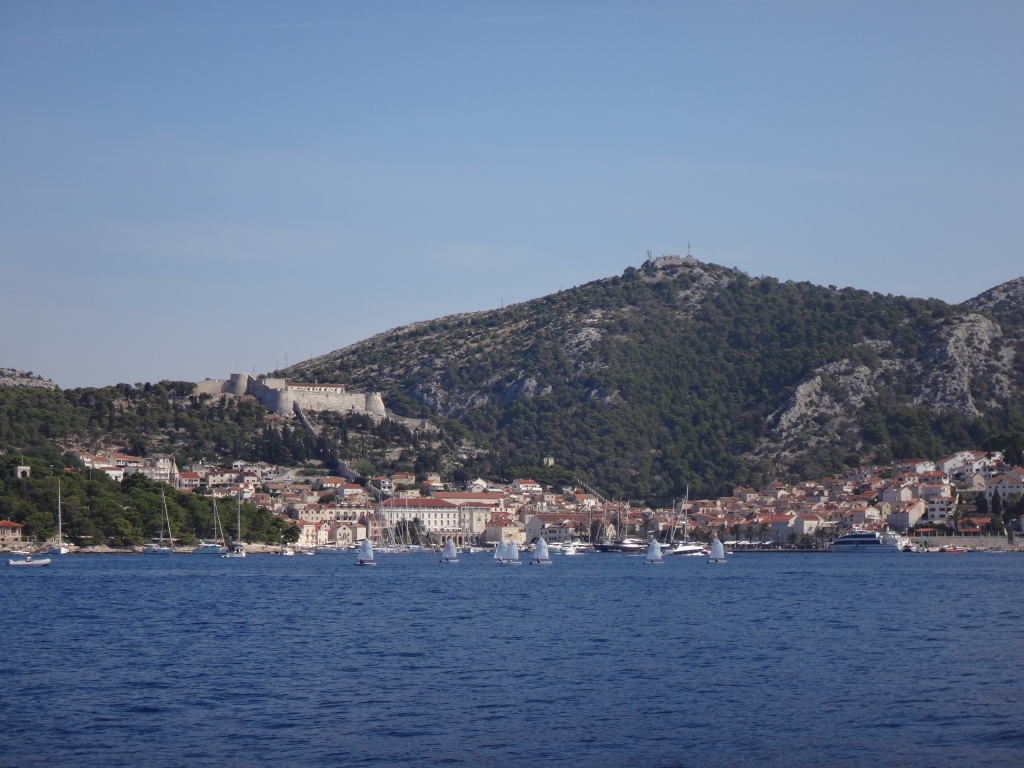

Most of the journey was spent with the engine on however, the wind did eventually arrive and the sails went up for the last couple of hours. We anchored in the familiar bay of Uvala Račišće on the island of Korčula.

It was a clear calm night with lightning behind the hills illuminating the sky, but thankfully no storms for us. Our journey continued the next day towards the Pelješac peninsula to visit the walls of Ston. This was another dead flat calm day but we had the best dolphin show so far, and I managed to get some photos!




After sailing along the Stonski Kanal we reached the small village of Broce which lies at the entrance of the narrow channel to Ston. Another beautiful bay all to ourselves surrounded by tall tree covered hills.
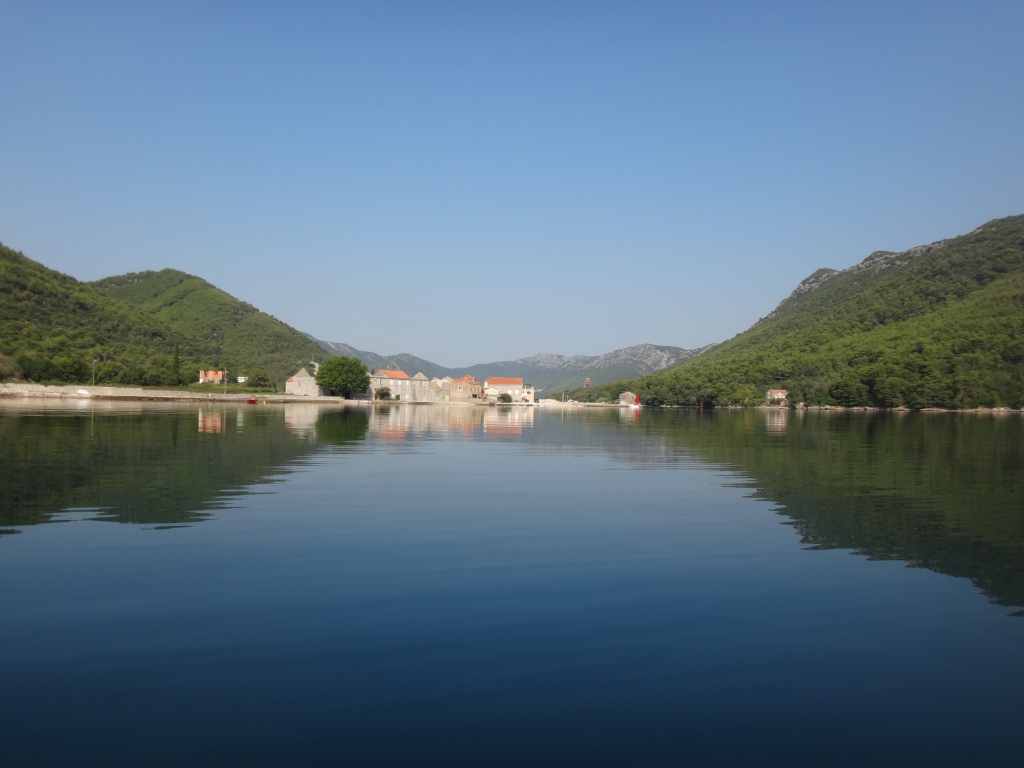
Just as we were arriving, the autopilot stopped working which was worrying as we have a long overnight passage planned when leaving Croatia. It would be quite frustrating and very hard work if we have to hand steer all of the way. Paul spent the afternoon with the manuals out and his head back under the bed testing everything to try to find the fault. After lots of huffing and puffing I eventually heard great jubilation from the cabin. He had found that a ‘dodgy solenoid’ had caused the problem and once tightened the autopilot was back up and running (we hope!).

After a quiet night at anchor, we went ashore and walked alongside the channel from Broce to Ston. The small villages of this area all suffered extensive damage in the 1991/92 war and 1996 earthquake. Although much repair work has already taken place, there are still many abandoned houses without roofs and others showing signs of the battles that took place here.


As we got closer to Ston there was a great view of the salt pans to one side, wildlife in the still water to the other and the famous walls up on the hillside in front of us.




Ston is a small quiet medieval town with narrow streets and ancient houses in the municipality of the Dubrovnik-Neretva County, located at the south of the Pelješac isthmus.


When the Republic of Dubrovnik acquired the Pelješac peninsula in 1333 the ruling council started to fortify the area to be the first line of defence for Dubrovnik and to protect their precious salt industry which contributed significantly to the wealth of Dubrovnik.
Salt was a valuable commodity considered to be ‘white gold’. Ston salt pans are thought to be among the oldest in the Mediterranean with the basic method of production remaining the same since the Middle Ages. The storage area for the salt was guarded 24 hours a day and punishment for attempting to steal salt was the loss of your hand.
The walls of Ston took two centuries to complete. They were a massive architectural and construction feat, the longest fortification in Europe at the time, originally 7km long and strengthened by forts, towers and bastions.
During the first thirty years, the walls were built from one side of the peninsula to the other. Then two small fortified towns were erected, Ston on the south and Mali Ston (Little Ston) on the north, to house people for guarding the borders and working in the salt pans.
We decided to walk along the walls from the small fishing village of Mali Ston to Ston as we had been told that it would give the best views. After having a quick look around the village, we started our ascent to the first hillside fort where there was ongoing restoration work being carried out. From here we followed the wall on its very steep climb up 100’s of steps.
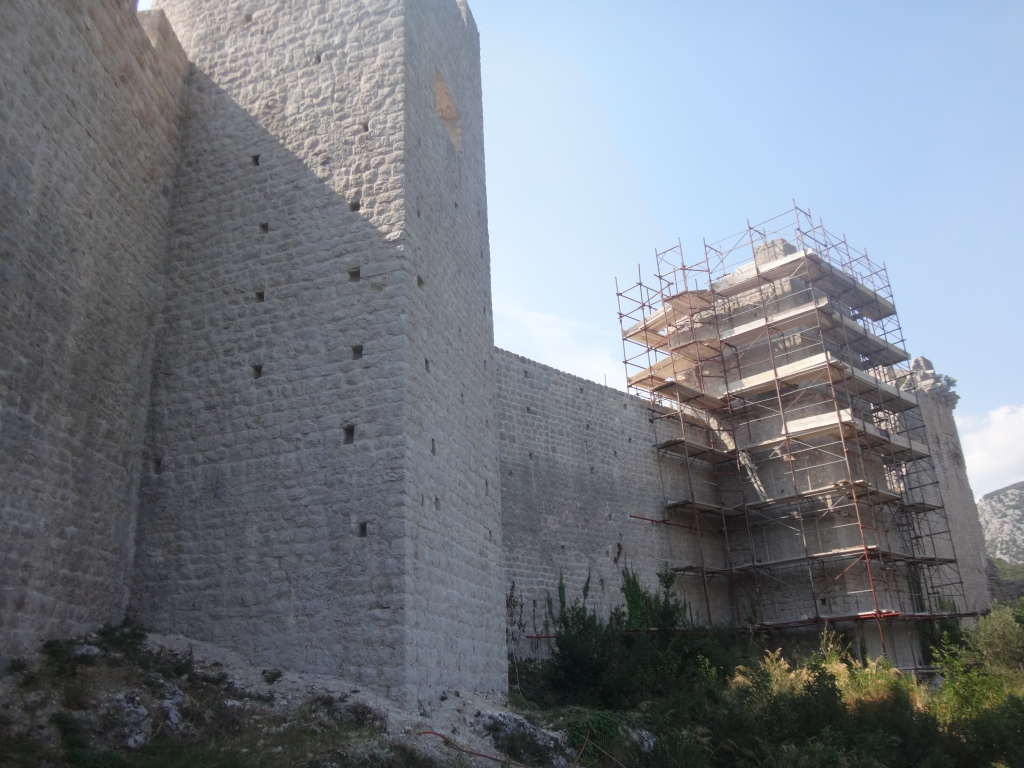



Hot and rather short of breath we reached the highest part of the wall, the effort involved in getting up the steep sections was definitely made up for by the stunning views.

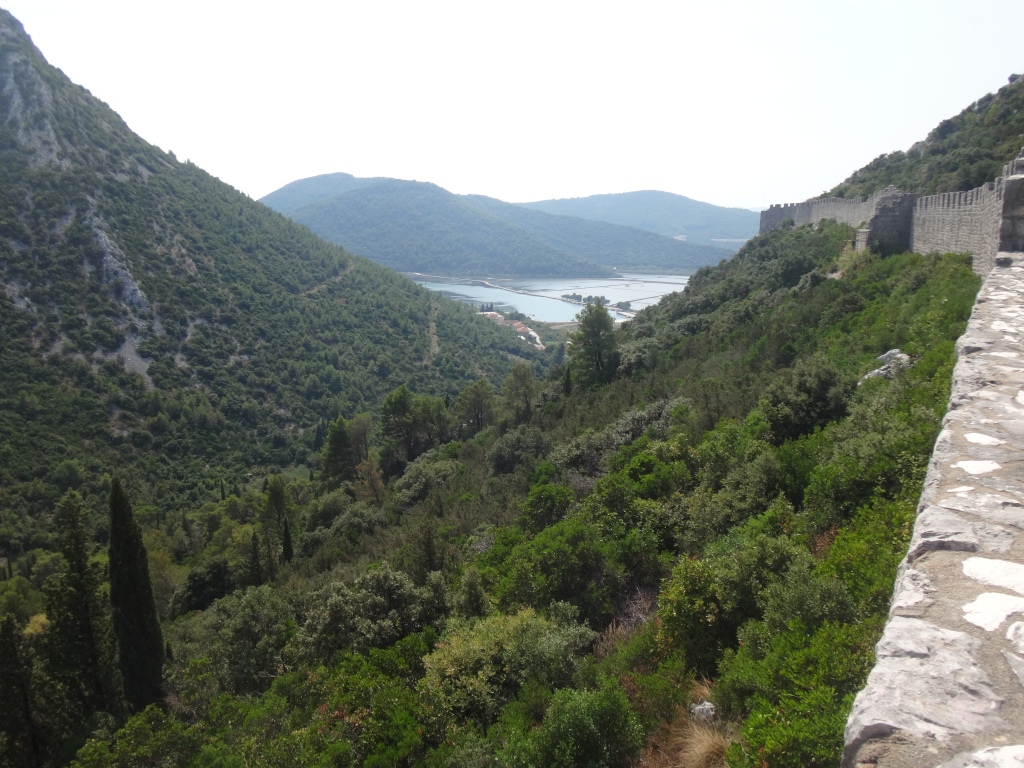
The section along the top was much flatter and gave further views overlooking the towns below, the sea, farmland, the surrounding hills and the saltpans in the distance. From here it is easy to imagine the soldiers and guards working along the battlement which remains at between 5 and 10 metres high, giving a feeling of how well protected the peninsular would have been.



The decent was a very steep narrow staircase which took us back down to Ston where we stopped in one of the cafes for a well deserved lunch.

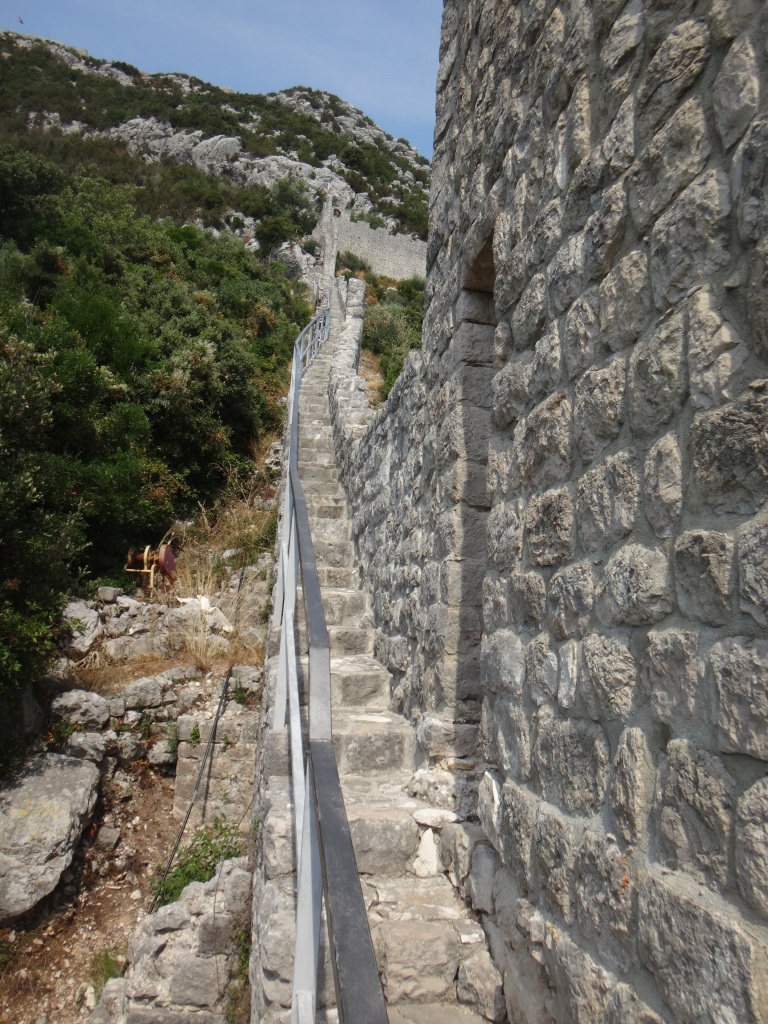
The walls were last used in the 19th century for defence against the Ottoman Empire when parts of the wall were destroyed, they then sustained further damage in the earthquake of 1996 which spurred a restoration of the walls. Now the walls are protected, they are some of the world’s longest intact defensive walls, second only to the Great Wall of China.
In the town we looked around the well preserved Fort Kaštio, completely surrounded by a moat, it has been recently renovated and looked very pristine. It had a large courtyard where a wedding reception was taking place, unfortunately, we weren’t dressed appropriately to blag our way in. But we were able to look down to it from the upper galleries where there were also further views of the town and walls, old cannons and overhanging sentry boxes in each corner.




After a long hot day we returned to Ziggy with aching legs so had a swim in our own private bay and a relaxing evening. We are now just 20nm from Dubrovnik which is our next destination and the final stop of this seasons trip around Croatia.
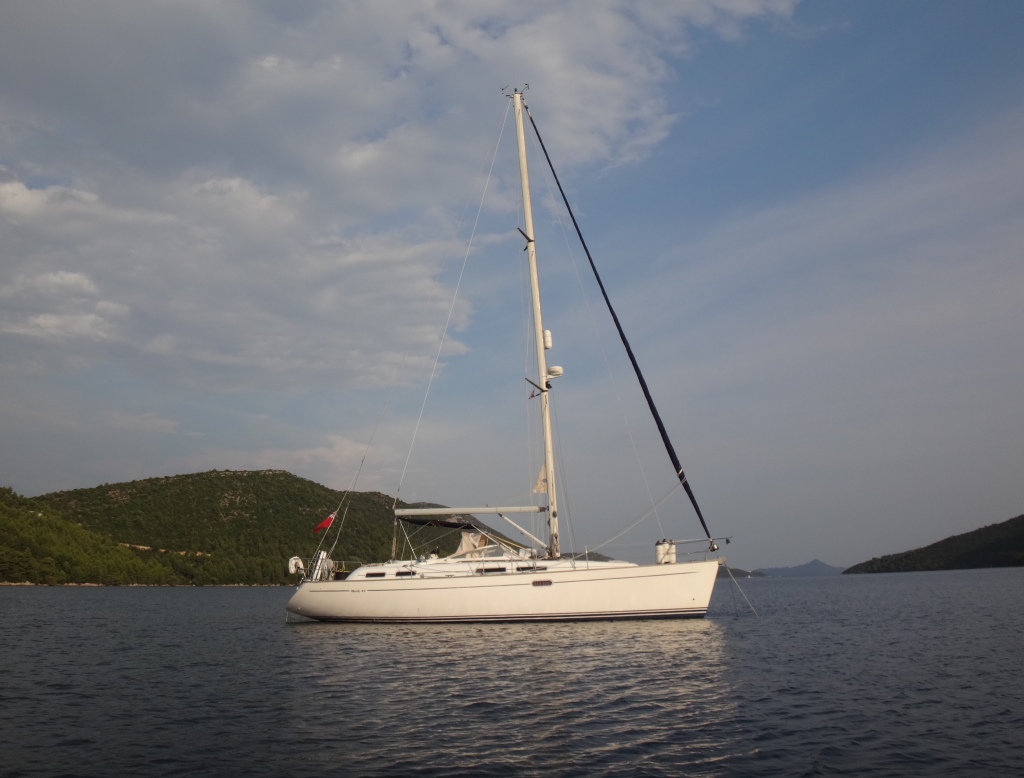

8 replies on “The Great Wall of Ston”
That’s a real shame, but one day it will happen! Continue having a great adventure and putting up the posts. Keep safe. N&B
LikeLiked by 1 person
How brilliant to see those dolphins, and to be able to snap them out of the water is even better.
2 centuries is a serious commitment to building something. The guys working on it must have thought they had a job for life 🙂
Safe onward sailing on your long passage ahead and may the wind gods be kind.
LikeLiked by 1 person
Paul, Sue,
Another wonderful and inspiring travelogue with great photos, as always.
Glad you got the autopilot incident resolved, and what a wonderful dolphin show!
Dan
LikeLiked by 1 person
As soon as you said the autopilot stopped I knew it would be a solenoid problem! 😀 The dolphin photos are the best ones yet. Just gorgeous x
LikeLiked by 1 person
🤣🤣
LikeLike
Another great read and fabulous set of photos. Idyllic moorings, a spectacular dolphin show and the awesome walls of Ston with their stunning views are all absolutely stunning. Enjoy your return to beautiful Dubrovnik with its superb architecture and excellent restaurants and bars.
LikeLiked by 1 person
Hi Paul & Sue,
What a small world. We are currently having a cracking boat lunch in Loviste, just north of Korcula Island. After lunch heading to Korcula town to avoid the strong winds tonight. Due in Dubrovnik on Saturday afternoon with flights booked for the UK on Sunday.
If you’re in the area, mail me and we could meet up! Nigel & Barbara
LikeLiked by 1 person
Hi Nigel and Barbara
Unfortunately our blog is a few weeks behind real time. Our post this week will be all about our departure from Croatia, sailing south from Dubrovnik.
We will have to get our diaries better organised next time. Enjoy the rest of your time in Croatia.
LikeLike